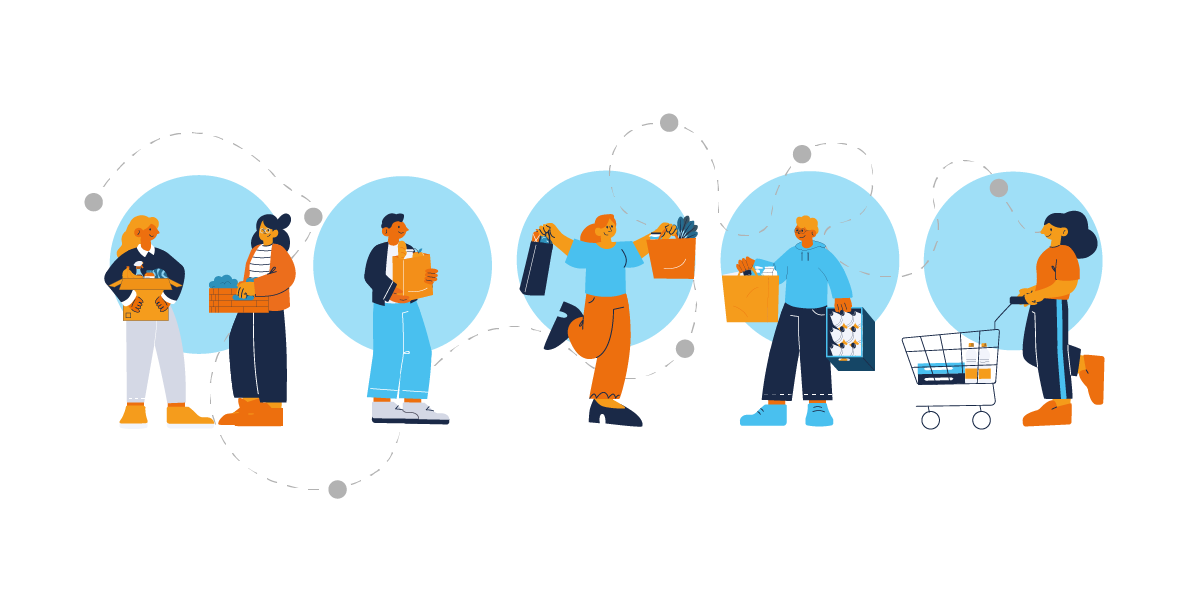The food & beverage industry has undergone significant transformations over the past few years, especially with the rise of e-commerce. While running errands offsite remains a common activity, we’ve observed a dramatic shift in customer habits. Many consumers now prefer the convenience of online shopping over the hustle and bustle of visiting physical stores, carrying heavy bags, or traveling long distances to their favorite grocery stores.
According to the predictions stated by L.E.K. Consulting, online food and beverage sales are expected to comprise 15-20% of the sector’s total sales by 2025 in the U.S., a staggering increase from 2016. This shift presents substantial opportunities for businesses within the industry to boost their e-commerce platforms and adapt to changing consumer demands. Supermarkets are increasingly investing in their online presence to offer more varied products and services, meeting the needs of their digital-savvy customers.
One prime example of these evolving needs is seen in the life of Emma, a caregiver dedicated to her work, which requires her physical presence and attention to the elderly. For someone like Emma, traditional grocery shopping can be time-consuming and inconvenient, especially if the desired products are out of stock or located far from home.
Here are some common daily challenges and strategies to address them, helping to ensure your online store stays up to speed.
Personalized Homepage and Promotions
Tailoring the homepage to Emma’s preferences by showcasing her favorite products and offering personalized promotions can significantly improve her shopping experience. This personalization makes her feel valued and catered to, simplifying her shopping process.
Scenario 1: Emma frequently purchases organic vegetables, dairy-free milk, and gluten-free bread. When she logs into the grocery website, the homepage prominently features these items, along with a banner highlighting a discount on organic produce. This tailored display saves her time and effort, allowing her to quickly add her regular items to her cart.
Scenario 2: Knowing that Emma often buys elder care products such as nutritional supplements and easy-to-prepare meals, the homepage includes a section dedicated to these items, along with special promotions like “Buy 2, Get 1 Free” on her preferred supplements. This targeted promotion not only meets her needs but also encourages her to take advantage of the deals.
Scenario 3: Emma’s purchase history shows a preference for certain brands of cleaning supplies and household goods. The homepage can be customized to feature these brands, with notifications about any ongoing sales or new product arrivals. This ensures Emma stays informed about products she is likely to buy, making her shopping experience more efficient and enjoyable.
Product Bundles
Emma, managing groceries for multiple households, might find browsing for individual items exhausting. Offering bundles of essential items can streamline her shopping experience. For instance, a “Weekly Grocery Essentials” bundle that includes bread, eggs, milk, vegetables, and proteins can save her time and effort, making her job much easier.
While Emma needs to shop for three different households every week – instead of searching for each item individually, she can simply order a pre-packaged bundle that contains all the staples, reducing her shopping time significantly.
Streamlined Checkout Process
A complicated checkout process with unexpected fees can lead to frustration and abandoned carts. Ensuring a smooth, fast, and transparent checkout process with multiple payment options, easy application of discount codes, and immediate confirmation emails with tracking information can greatly improve customer satisfaction.
For instance, Emma, who is often in a rush due to her caregiving duties, needs to complete her order quickly. A streamlined checkout process allows her to finish her purchase without any hassle, enabling her to promptly return to her responsibilities.
Conclusion
The future of the food and beverage industry lies in understanding and meeting these evolving consumer needs through innovative e-commerce strategies with onsite personalization as a key, offering a positive customer experience, facilitated by tailored homepages, convenient product bundles, and a streamlined checkout process, leads to higher customer satisfaction, increased repeat purchases and beyond.
